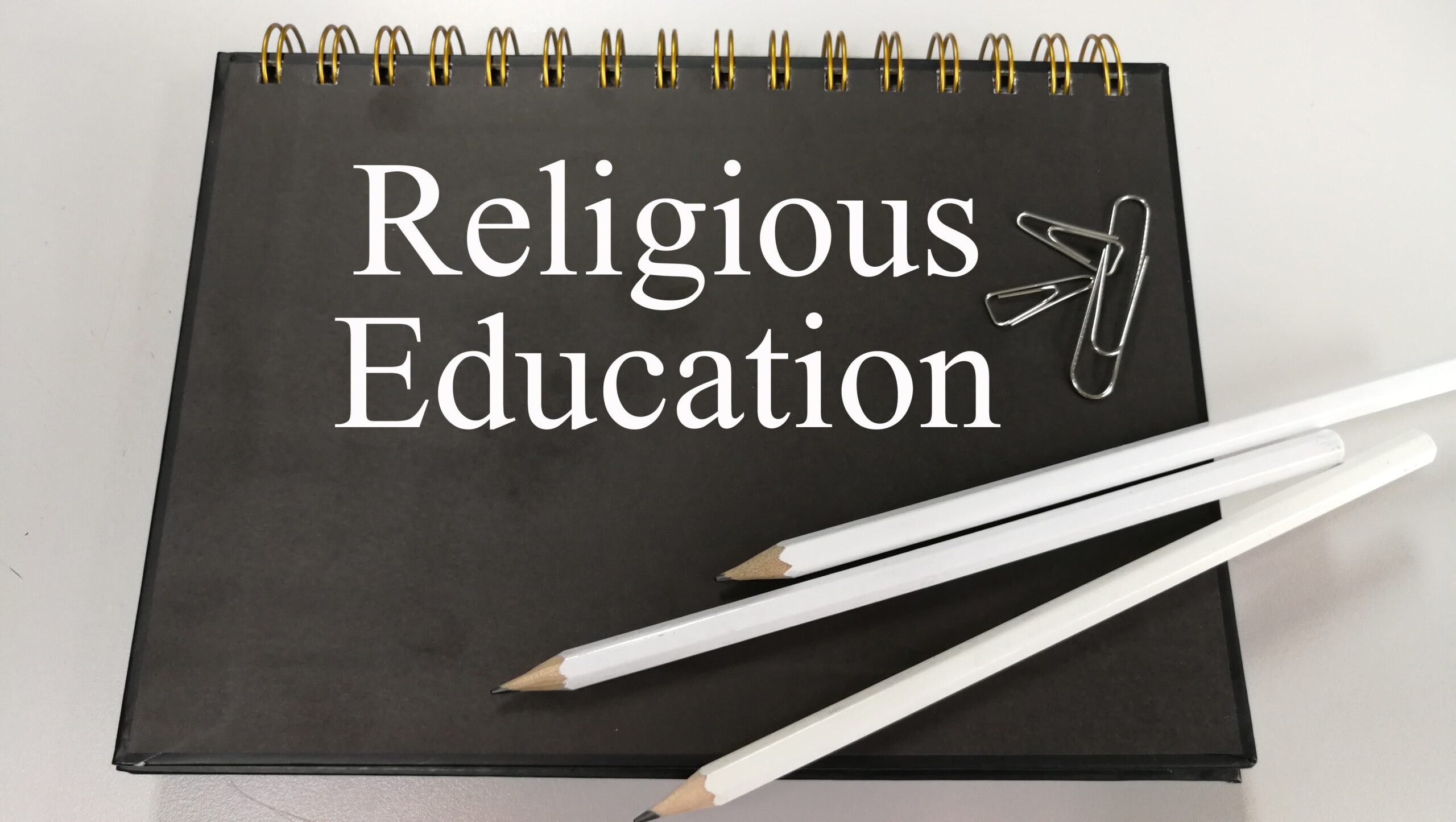| Getting your Trinity Audio player ready... |
Parenting is a weighty responsibility, perhaps the most important task of one’s entire lifetime. Yet most people approach this awesome responsibility with the assumption that all parents intuitively know how to raise their children and do not require any special preparation and knowledge. Some people operate according to the myth that “You either have it or you don’t”; i.e., one is either a natural-born parent who does not need any education in parenting, or one does not have the capacity for healthy parenting, in which case education will be of no use… No parent would take a child in need of health care to someone who had no medical training. Yet few parents realize that they themselves may lack the skills to be optimal parents.
There is a great deal of evidence that infants are highly impressionable, and it has been hypothesized that even in intra-uterine life the fetus can be affected emotionally as well as physically. Rabbi Samson Raphael Hirsch stated that training of a child should begin 20 years prior to his birth. What Rabbi Hirsch means is that the Talmudic principle, “Correct yourself and then correct others” (Bava Metzia 107b), applies to parenting as well to other relationships. Healthy parenting should begin not with the focus on the child, but rather with the focus on oneself
While there are a few rules that are without any exceptions, here is one that is absolute. Never, but never, humiliate a child. Discipline does not require his being shamed. A child should not be humiliated in the presence of his friends or even his own sisters or brothers. When reprimand or punishment is necessary, call the child aside, and in privacy carry out the required discipline. Although the child may resent the reprimand, he will appreciate your concern for his self-respect. On the other hand, if you reprimand him in the presence of others, the pain of being humiliated may be so intense that it obscures the message of the reprimand, and the discipline is of little value.
It is important for parents and siblings to respect a child’s privacy. Parents do not like children to rummage through their things or to enter a closed room without knocking. These same considerations should be shown to children.
Many Jewish homes are graced by the presence of sacred books: the Scriptures and a set of the Talmud. This is admirable indeed, but not nearly as effective as when children see their parents reading these sacred books. The Scriptures, the Talmud, and many great Torah works are now available in English, so that they are accessible to all. We indeed indicate that we love Torah by displaying these sacred books in our home, but the message is enhanced manifold if they are put to more than ornamental use.
Note: As of now, there is no audiobook version available. There is a pressing need for Jewish authors to produce audiobooks, as doing so would significantly aid those who face challenges with reading. In the meantime, using software such as Natural Reader with CZUR (OCR) may be a helpful alternative for many.
Related Study (Chapter):
Please note that the studies shared on this website are for informational purposes only. Readers are encouraged to critically evaluate the content and not to accept it as absolute or complete without further verification. The views expressed in the studies do not necessarily reflect the opinions of this website.
Article 16: The Right to Protection of Privacy by Christian Whalen
Abstract
This chapter provides a brief overview of article 16 of the UN Convention on the rights of the child and of its legislative history as outlined in the Travaux Préparatoires. It outlines the principle threats to children’s privacy today and summarizes the substantive content of Article 16, particularly in relation to the General Principles of child rights in Articles 2, 3, 6, and 12, as well as the nexus between the right to privacy and several other rights of children under the Convention as well as other international human rights instruments. It then puts forward four main attributes of the child’s right to privacy as aspects of the right which State Parties should monitor as a means of measuring the effective implementation of Article 16. The essential attributes of Article 16 and the child’s right to privacy are State protection against: (1) interference with privacy; (2) interference with family, home or correspondence; (3) unlawful attacks upon honour and reputation; and (4) protection of the law against unlawful interference or attacks.
- 1.
No child shall be subjected to arbitrary or unlawful interference with his or her privacy, family, home or correspondence, nor to unlawful attacks on his or her honour and reputation.
- 2.
The child has the right to the protection of the law against such interference or attacks.
Parents and housemothers (in state care facilities) should ask if they can check your personal stuff because you sometimes don’t want them to see the stuff. They should not read our diaries and not answer our phone calls. (Africa)
Government should pass a law banning unnecessary surveillance on the children. (Asia-Pacific)
The opportunity to be online and have a chat without fear of disclosure of chat and correspondence. (Eastern Europe)
Training for students as to how to protect their privacy in social media, and the impact of data mining. (Eastern Europe)
Overview
Article 16 asserts the child’s right to privacy in the exact terms of the International Covenant on Civil and Political Rights, but it innovates by juxtaposing this right to a new right in relation to the child’s right to information in Article 17.Footnote1 Protecting privacy in an information age requires a principled regulation of a child’s right to access information that can promote their social, spiritual and moral development. The nexus between Articles 16 and 17 is therefore an important one. The Travaux Préparatoires reveal that the first drafts of the Convention included no provision on a right to privacy (Detrick et al., 1992, pp. 255–265). A draft provision was introduced by the United States 1982 stating: ‘that the child and his parents are not subject to unlawful or arbitrary interference’. In 1983, the United States tried again to incorporate a right to privacy referencing only the child’s right and not the parents’ rights and in 1985, further recommended that the right to privacy be couched in a broader provision of civil and political rights generally. Eventually, it was agreed to include the right, as with other civil and political rights, following the text of the International Covenant on Civil and Political Rights as faithfully as possible.
Article 16 affirms the child’s right to privacy, including informational privacy, personal and spatial privacy, and the right to solitudeFootnote2; it also emphasises a right to protection against arbitrary or unlawful interference with the child’s family, home or correspondenceFootnote3; and a right to protect his or her honour and reputation.Footnote4 Finally, the Article requires States Parties to protect children legally from interference or attacks on their privacy. Children’s privacy can be particularly at risk within their parental home, within alternative care settings, and within institutional settings including schools and hospitals.Footnote5 However, as for adults, children’s privacy is increasingly at risk online (Innocenti, 2012). Threats to children’s privacy may arise from the digital activities of others, whether peers, family, educators or strangers; from data collection and processing by public institutions, businesses and other organisations; and from criminal activities such as hacking and identity theft (Innocenti, 2017). The Committee has pointed out the significant rise in the range and incidence of privacy concerns related to the increase in mass collection of personal data and the multiplication of platforms for sharing of such data (UN Committee on the Rights of the Child, 2014 and 2021). While the text of the Convention directly reflects the formulation of the right to privacy in the ICCPR, the provision is also supple enough to defend children’s privacy against the emergent threats of state surveillance and exploitative commerce.
General Principles
Article 2
The relationship between privacy rights and liberty interests, for instance those in Articles 6, 12, and 13 through to 17, is stronger than with equality interests and yet privacy rights of children intersect with the non-discrimination principle in Article 2 in important ways. For example, marginalised and vulnerable children, such as visible minorities, children with disabilities, LGBTQ children, and street or drug-endangered children may find themselves more often in institutional settings where their privacy rights may be infringed and may be particularly susceptible to privacy rights violations in those settings.
Article 3
The best interests of the child principle may at times be mistakenly invoked as a justification for breaching a child’s privacy. Privacy interests are sometimes considered trivial,Footnote6 a right that state officials may view as something to be overridden when the child’s best interests require it. The Committee, however, has sought to dissuade governments from this view and has insisted that the best interests principle has to be applied in a manner consistent with the provisions of the Convention as a whole (2007, para. 26).
Article 6
The relationship between the child’s right to life, survival, and maximum development, and the right to privacy, is a close one. The framers of the Convention were concerned that a strong right to privacy might infringe on parental authority, and accordingly, the provision initially included a limitation to safeguard parental authority. That limitation was eventually removed and recast as Article 5 (Detrick et al., 1992, pp. 258–259). The Convention balances the parents’ role in nurturing and guiding the child in the exercise of their rights, in a manner consistent with the child’s evolving capacities, against the child’s autonomy and liberty interests. The right to life, survival, and development are the kernel of the child’s liberty interests in contributing to the child’s development into an autonomous human being. Protecting the child’s privacy is a critical factor in developing their autonomy, freedom, and agency.
Article 12
The child’s right to express their views must be understood as a right, not an obligation (UN Committee on the Rights of the Child, 2009, para. 16). Children can choose not to express themselves, and in so doing are exercising a right to privacy. When children do express their opinions and views in decisions affecting them, they are entitled to a reasonable expectation of privacy.Footnote7 For example, in health consultations, in decisions concerning placement in care, or concerning their experience as victims of abuse or neglect, there should be a presumption of confidentiality but with limits, linked to the child’s right to protection, consideration of their best interests, and parental rights in relation to the upbringing of their children (Tobin & Field, 2019, pp. 570–571). Any decision to override the right to privacy or confidentiality must be informed by both evidence and the views of the child themselves. In court proceedings, the balancing of the child’s right to privacy with the interests of fairness and due process in decision-making should always be carried out with regard for the child’s best interests.Footnote8
Articles Related or Linked to Article 16
Article 5 provides that appropriate direction and guidance by parents and guardians must be consistent with the child’s evolving capacities and, accordingly, must take account of their privacy rights in line with those capacities.
Article 7 which provides the right to a name, nationality and to know one’s parents can, in certain circumstances, raise a conflict of interest between the privacy rights of the child and their parents.
Article 8, preservation of identity is integral to the child’s protection of their privacy and sense of family and belonging.
Article 9, non-separation from parents unless in the child’s best interests, but where such separation is necessary, it is imperative that in any proceedings, children’s privacy is fully respected.
Article 13 provides for children’s right to freedom of expression, but this is limited by the requirement that it is exercised in accordance with respect for the rights or reputations of others.
Article 17 provides for children’s rights to information from the mass media, but such information must not violate child privacy rights.
Article 19 provides protection from violence but in any intervention to provide protection, the child’s privacy rights must be respected.
Article 20, children in alternative forms of care must have their privacy rights respected.
Article 37 imposes a prohibition on cruel or unusual punishment and arbitrary deprivation of liberty, and where punishment or deprivation of liberty is imposed it must not violate children’s privacy rights.
Article 40, children’s privacy must be respected within the criminal justice system.
Relevant Instruments
UN Universal Declaration of Human Rights (1948), Article 12
International Covenant on Civil and Political Rights (1966), Article 17
European Convention on Human Rights (1950), Article 8
American Convention on Human Rights ‘Pact of San Jose, Costa Rica’ (B-32) (1978), Article 11
African Charter on the Rights and Welfare of the Child (1990), Article 10
Attributes
Attribute One: Interference with Privacy
Privacy is vital for children’s agency, dignity and safety, and for the exercise of their rights (Innocenti, 2017; Kaye and UN Human Rights Council, 2018; UN General Assembly, 2019). One of the core values protected by the right to privacy is the right to be left alone, or the right to solitude. Janusz Korczak, for example, highlighted that even children in an orphanage, with dormitories and very limited privacy, needed a private space, be it a drawer or a suitcase to keep their more prized possessions, a place that would be only theirs (2009, p. 25).Footnote9 Courts sometimes distinguish personal privacy from informational or spatial privacy.Footnote10 The closer an intrusion comes to the biographical core of a child’s privacy, the higher the onus against interference will be. National constitutional courts and regional human rights bodies have developed a clear jurisprudence in relation to privacy rights, placing strict limits on state intrusions on a child or any citizen’s privacy. They insist that the law must protect against privacy infringements that are:
not sanctioned by law
arbitrary (in the sense that they must be carried out in the pursuit of legitimate state aims)
unnecessary. It must be shown that the privacy infringement was not disproportionate to the legitimate aims sought and constituted the least intrusive means of securing those legitimate aims (Electronic Frontier Foundation, 2014).
The Convention also requires that States Parties take measures to protect children’s privacy from intrusion by non-state actors. Violations of a child’s intimacy, through relentless bullying, luring, and unwanted attention or touching infringe Article 16 (UN Committee on the Rights of the Child, 2014). Similarly, non-consensual collection of a child’s biological data, through blood samples, voiceprints, and fingerprints may constitute infringements (Global Privacy Assembly, 2008). Consent-based schemes for the collection of such data may also infringe on privacy.Footnote11 Threats to privacy are often online. Data mining and targeted marketing to children based upon their online web-surfing activities, and the use of embedded sensors in toys and clothes connected to automated systems, often lack transparency and may constitute violations of the child’s right to be let alone (Milkaite & Verdoodt, 2017). School video surveillance also intrudes upon children’s privacy and can only be justified if the interference is neither unlawful or arbitrary (Information and Privacy Commissioner of Ontario, 2015; Office of the Privacy Commissioner of Canada, 2012).
Attribute Two: Interference with Family, Home, or Correspondence
Article 16 also deals with spatial or territorial privacy and informational privacy which is given a very broad reading by the Committee, as it is in other constitutional law texts and human rights treaties (Hodgkin et al., 2007, pp. 210–211). The text is broad enough to encompass a trespass to property or to a family member, and although the Convention does not establish property rights for children, the privacy protections do afford children a certain right to exclusive enjoyment of their property and protection against the interference of others (Kilkelly, 2001, pp. 59–62). It also protects their relationships with family. For example, attempts at alienating a child from one of their parents or siblings could constitute a privacy rights violation (Kilkelly, 2001, pp. 50–54). In jurisdictions subject to the European Convention on Human Rights, the privacy rights of children are frequently invoked in child protection matters. However, most privacy infractions today are in relation to informational privacy, and increasingly in respect of the digital environment, for example, breaches of confidentiality, personal health information leaks, and surveillance. In many cases, intrusions into children’s personal information that would be unacceptable for adults are justified for children in terms of their protection and best interests. However, any such intrusions must be valid and justified taking into account children’s own views and their evolving capacities (Tobin & Field, 2019, p. 570).
Attribute Three: Unlawful Attacks on Honour and Reputation
Privacy experts maintain that we are moving from an information age to an economy founded on reputation (Lessig, 2010; Swallow, 2013). Article 16 rights protect children from traditional harms such as libel, slander, and misappropriation of their image. The Committee, for example has pointed to the vulnerability of street children to unlawful attacks on their honour and reputation (2017, paras. 27, 43, 60). The Committee has also argued that children’s honour and reputation can also be abused as a group, for example, by the media denigrating them and their behaviour based merely on their age.Footnote12 However, in the age of social media, where children are increasingly engaged in activities without parental supervision, children are particularly at risk of various online risks to the honour and reputation (Nyst, 2017). Increasingly the attacks on honour and reputation come in the form of distribution of sexts, cyber-bullying, child pornography and the unauthorised use of children’s images online.
In order to constitute a violation, an attack must be intentional and contain untruthful statements (Tobin & Field, 2019, p. 594). The Human Rights Committee has argued that States Parties have to balance the rights embodied in Article 16 with the right to freedom of expression, but at the same time they also have an obligation to enable individuals to protect themselves from unlawful attacks and to have an effective remedy against those responsible (UN Human Rights Committee, 2011, para. 37; United Nations, 2006, p. 181).
Attribute Four: Protection of the Law Against Unlawful Interference or Attacks
Data monitoring and measurement of child privacy standards requires more than the simple proclamation of the rights to privacy. There must also be programmes to dissuade the public from these practices, to sanction them, and to provide recourses and remedies to victims of bullying and other privacy violation (United Nations, 2006, p. 182). Surveillance of children, together with any associated automated processing of personal data, must not be conducted routinely or indiscriminately, and not without children’s knowledge (UN General Assembly, 2019). States Parties should review their own procedures regarding the collection and processing of children’s personal data and correspondence to ensure they respect children’s right to privacy, including in governmental decision-making and within the criminal justice system (UN General Assembly, 2019). Furthermore, any restrictions or intrusions on the child’s right to privacy must be prescribed by law, necessary, and proportionate (UN Human Rights Council, 2017, para. 2; UN Office of the High Commissioner for Human Rights (OHCHR), 2014, para. 23). States Parties should also ensure the implementation of effective data protection legislation, and take other measures as necessary, to prevent arbitrary or unlawful interference with children’s privacy, family, home or correspondence in relation to the digital environment (Albania et al., 2018; Nyst, 2017; UN General Assembly, 2019).
Notes
- 1.
For a discussion in relation to the links between the right to privacy and the right to information more generally, see David Banisar’s The Right to Information and Privacy: Balancing Rights and Managing Conflicts (2011).
- 2.
Prosser defined privacy as encompassing four basic rights of (1) a right to solitude; (2) protection from public disclosure of embarrassing facts; (3) protection from publicity placing one in a false light; and (4) protection from appropriation of one’s name or likeness (1960). Cf Alan Westin, Privacy and Freedom (1967), who defined the four states of privacy as solitude, intimacy, anonymity and reserve.
- 3.
In reference to child privacy in institutional settings, see Niamh Joyce, An Analysis of the Extent of the Juvenile Offender’s Right to Privacy: Is the Child’s Right to Privacy Circumvented by Public Interest? (2011); regarding violations of a child’s privacy at home and for the philosophical underpinnings of Article 16 see Joel Feinberg, ‘The Child’s Right to an Open Future’ (1980).
- 4.
Libel and slander laws must protect children as well, and the Committee has expressed concern not merely about the application of these laws in individual cases but also to the treatment of children in general by the media (1996).
- 5.
The Committee interprets family, home and correspondence broadly, to encompass all relatives and significant persons living in familial contact with the child, every domicile or place of residence which a child may call home, and all forms of communication in which the child may have a privacy interest (Hodgkin et al., 2007, p. 210; UN Committee on the Rights of the Child, 2006, para. 15).
- 6.
The history of the evolution of privacy law as a common law tort both in the U.S. and in commonwealth jurisdictions shows how reluctant courts have been to engage in resolving privacy disputes. Lord Denning’s flat denial of a tort of invasion of privacy in Re X a Minor, [1975] 1 All ER 697, is premised on the view that the law does not concern itself with trifles and that privacy violations are best regulated through norms and social conventions. Lawrence Lessig, like most American constitutional scholars, takes a different view and demonstrates how in an information age privacy must be protected as a foundational human rights norm (2006).
- 7.
In the context of criminal justice administration, confidentiality requirements are explicitly spelled out in the convention Article 40(2) (vii) and in the Committee’s General Comments, for example General Comment no. 12, paragraph 61, but the nexus between Articles 12 and 16 is often in play in mental health and child protection proceedings as well (Hodgkin et al., 2007, p. 203).
- 8.
See, for example, A.B. v. Bragg Communications Inc. [2012] 2 S.C.R. 567, a case from the Supreme Court of Canada dealing with the balancing of a child’s privacy interests with the demands of fairness in relation to the open court rule.
- 9.
The Human Rights Committee also describes this right to solitude when it insists that ‘competent public authorities should only be able to call for such information relating to an individual’s private life the knowledge of which is essential in the interests of society’: (United Nations, 2006, p. 18).
- …
- 11.
As, for instance, when young internauts provide online consent to unscrupulous internet service providers or online game services through privacy policies that take unfair advantage or are couched in terms that children will not clearly understand (Lawford et al., 2008, p. 19).
Whalen, C. (2022). Article 16: The Right to Protection of Privacy. In: Vaghri, Z., Zermatten, J., Lansdown, G., Ruggiero, R. (eds) Monitoring State Compliance with the UN Convention on the Rights of the Child. Children’s Well-Being: Indicators and Research, vol 25. Springer, Cham. https://doi.org/10.1007/978-3-030-84647-3_11
This chapter is licensed under the terms of the Creative Commons Attribution 4.0 International License













